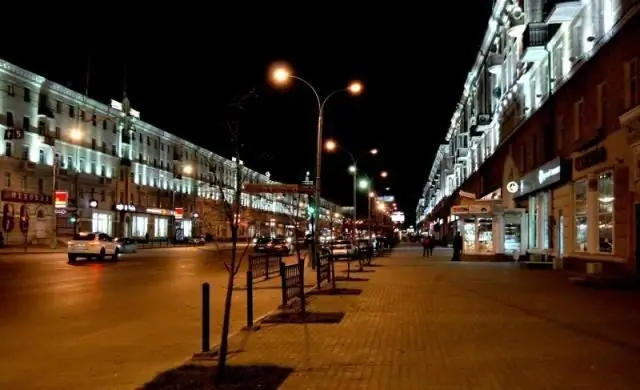- Author Antonio Harrison [email protected].
- Public 2023-12-16 07:44.
- Last modified 2025-01-22 21:44.
The ability to compose a social portrait is an integral part of the learning process for students of social specialties. It can be compiled for an individual person, for a group of people of a certain specialty, for a social phenomenon or a region. It is necessary to start training your skills from a more general category, for example, from the social portrait of your neighborhood.

It is necessary
- - schematic map of the microdistrict;
- -reporting documents of the administration of the microdistrict;
- - information documents of housing and communal services.
Instructions
Step 1
Consider a schematic map of the microdistrict, which is available in the district administration, or draw up on your own: residential buildings, retail outlets, production facilities, educational institutions, etc.
Step 2
Describe the natural environment. An important indicator is the characteristic of green spaces in sq.m. and water area, if any. Describe the ecological state of the area from documents or media reports: the level of air and water pollution, and the radiological situation.
Step 3
Study the material environment. Count the number of scientific and educational institutions, manufacturing enterprises, consumer services and catering establishments. The presence of sports grounds in the courtyards is specified through the information of housing offices, housing and communal services.
Step 4
Make a characteristic of the housing stock as a percentage: living in the state area, departmental, cooperative, individual, communal, in hostels, as well as the number of people registered to improve housing conditions. Indicate the degree of remoteness of the area from the city center and the saturation of public transport routes.
Step 5
Imagine the characteristics of the population by the following components: - the number of residents of the microdistrict by age; - the average age of the adult population; - the ratio by sex: men and women; - social composition: workers, office workers, intelligentsia, pensioners, housewives, etc. - the level of education of the population; - the share of people of working age.
Step 6
Highlight the ethnic specificity of the area, if any, as well as the socio-cultural traditions, values and religiosity of the people. Track migration processes: the ratio of permanent residents and visitors.
Step 7
Conduct a survey of families in the area. Count their total number, as well as large, incomplete, guardians, asocial, divorced, etc. Study in more detail young families with up to 3 years of life together. Do they live independently or with their parents, do they have children, do they need preschool institutions. Pay special attention to income in these families: at or below the subsistence level.
Step 8
Summarize your findings in the form of a summary of the findings in percentages, square meters and numbers. Note the specificity of the area that distinguishes it from other areas. Note the prospects for the development of the area: planned in the documents and actually achieved for the reporting period of time, which was studied.






